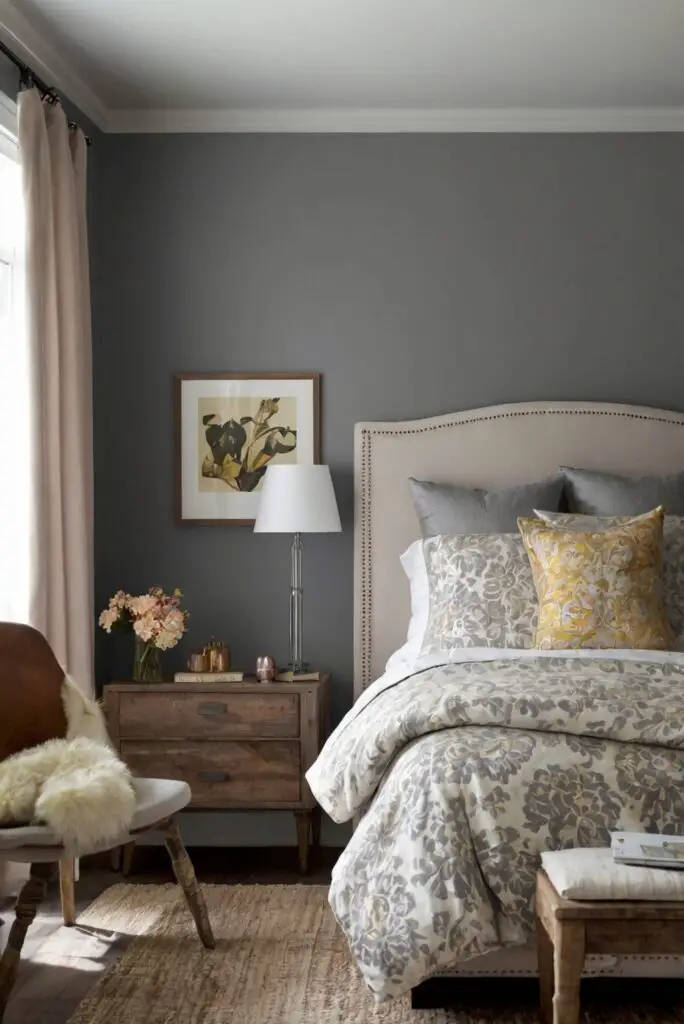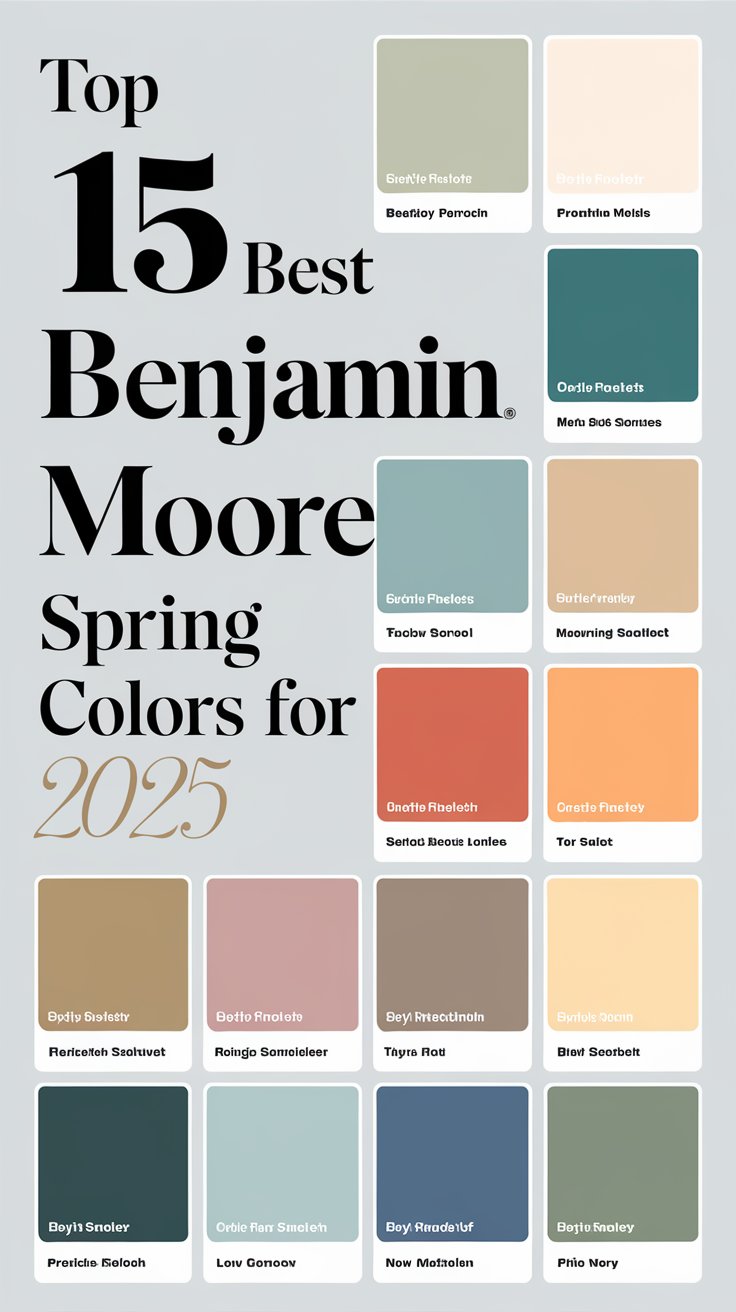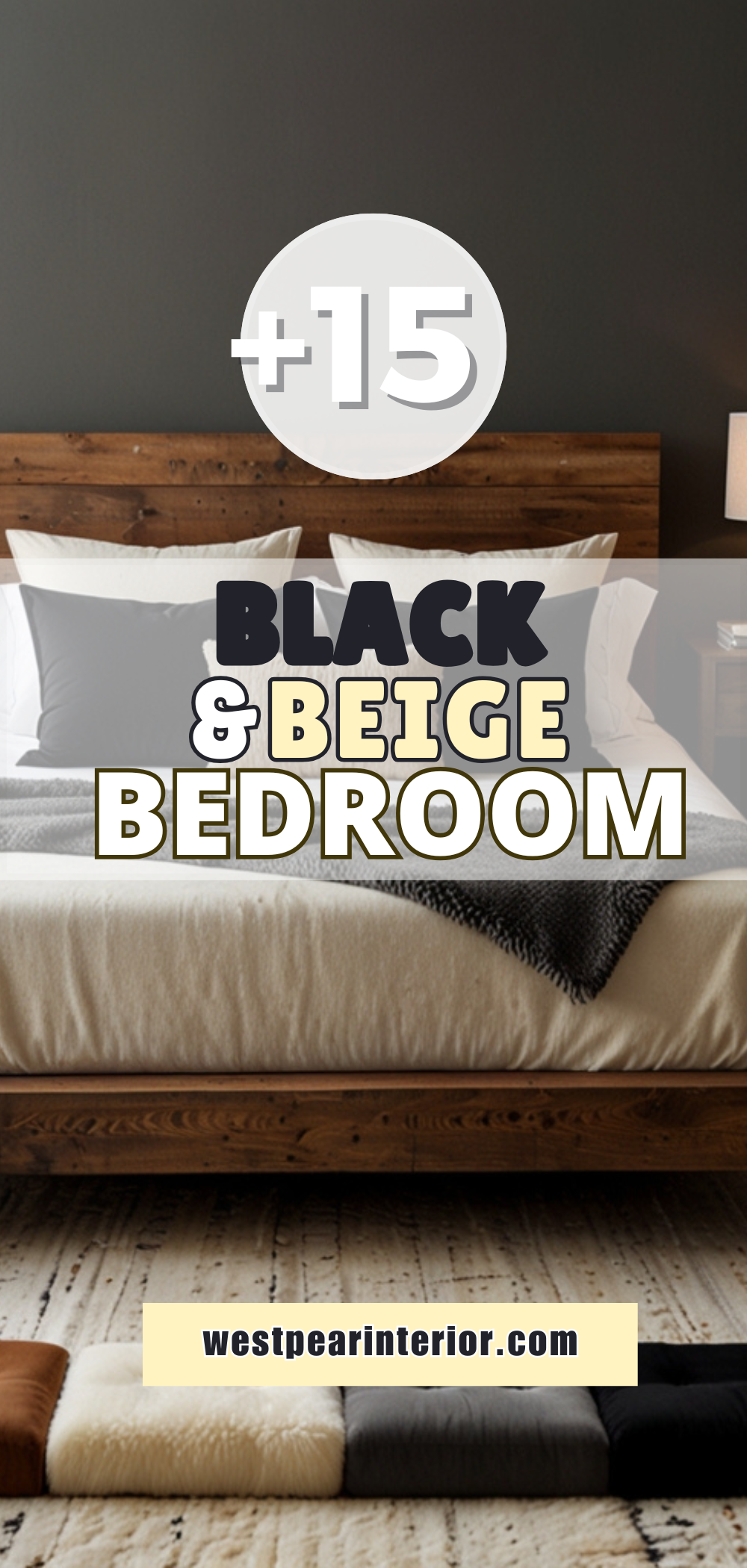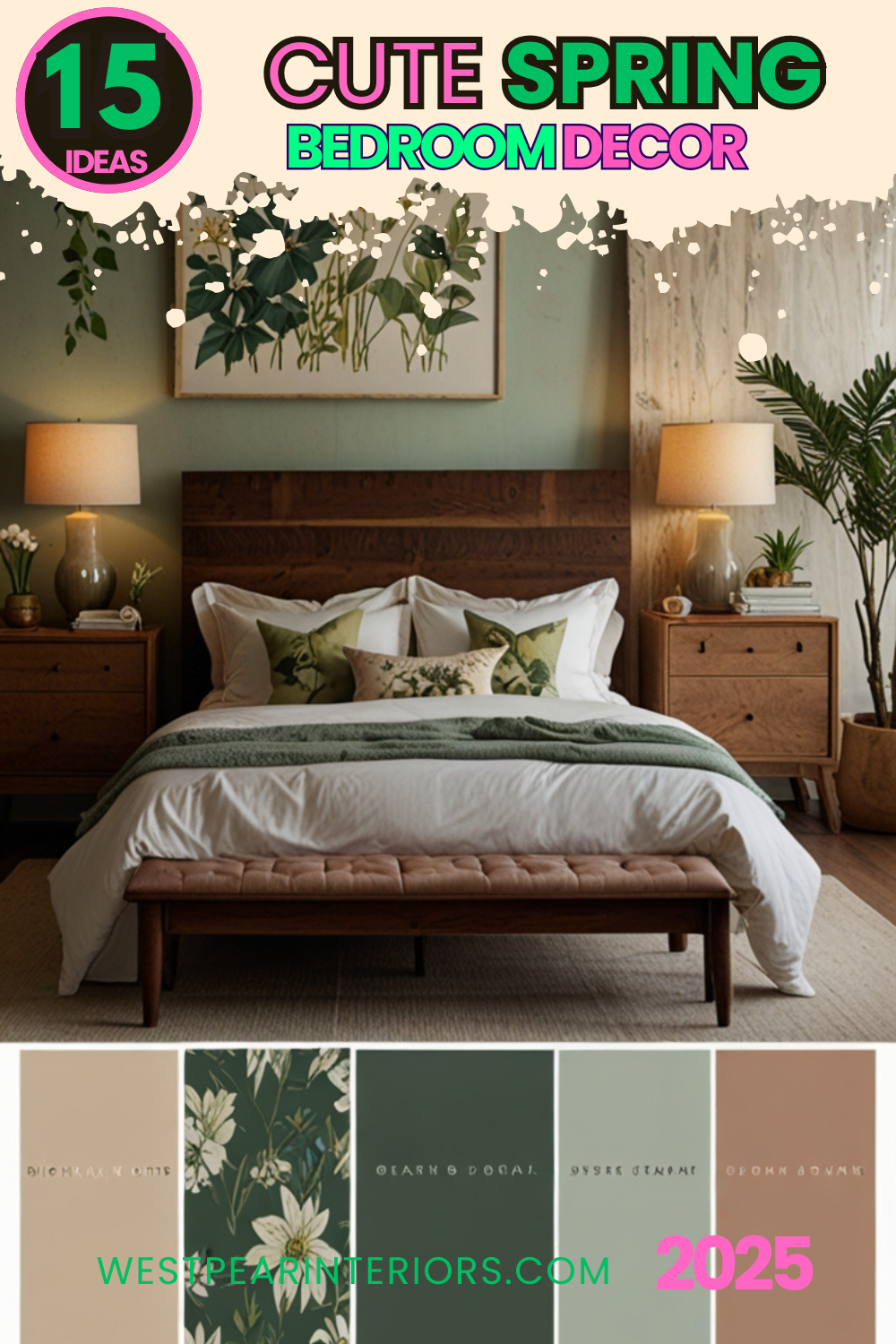Discover how the color palette in your bedroom can impact your mood and style. Uncover the secrets to creating the perfect ambiance.
Do you prefer a warm or cool color palette in your bedroom?
As a daily routine with an interior designer, selecting a color palette for your bedroom is crucial for creating a harmonious and inviting space. When deciding between warm or cool colors, consider the ambiance you want to achieve. Warm tones like reds, oranges, and yellows can create a cozy and intimate atmosphere, perfect for a relaxing bedroom setting. On the other hand, cool colors such as blues, greens, and purples can promote a sense of calmness and tranquility, ideal for a serene sleeping environment.
My Lovely Spring Paint for 2025
Ready for a Spring Makeover? Explore the Freshest 2025 Paint Trends!
White Sage/Green SW Pistachio green Soft blue Honeysweet/Orange Pink Sugar Sage Tint BMAs an Amazon Associate, I may earn a commission from qualifying purchases at no extra cost to you.
It’s essential to match colors or hues that complement each other to avoid clashing or overwhelming the space. Keep in mind the principles of color theory and consider the size and layout of your bedroom when selecting paint colors. Utilize primer paint for walls to ensure a smooth and lasting finish, and test paint colors to see how they look in different lighting conditions. Stay organized by creating a color swatch or mood board to visualize the overall look before making a final decision.
By incorporating the right color palette into your bedroom design, you can transform the space into a retreat that reflects your style and personality. Consult with expert designers for valuable insights on home decorating and interior design that suit your preferences and lifestyle.
Warm colors have various benefits when used in bedroom décor. Firstly, **warm colors** such as **red, yellow, and orange** are known to create a cozy and inviting atmosphere in a bedroom, promoting relaxation and comfort. These colors are also associated with warmth and can make a space feel more intimate and comfortable. Additionally, warm colors can help to stimulate energy and creativity, making them ideal choices for a bedroom where you may spend time reading, working, or engaging in hobbies.
My fAV Spring DECOR for 2025
Discover Spring’s Best 2025 Decor Combinations – Perfect for Any Room!
Oversized Indoor Plants White Curved Sofas Rugs BOH Brown Cream Moroccan Hype Boho Rug Outdoor Patio Furniture Sets Topfinel Pillow CoversAs an Amazon Associate, I may earn a commission from qualifying purchases at no extra cost to you.
Mixing warm and cool colors in the same bedroom is definitely possible and can create a visually interesting and balanced space. Combining warm and cool tones can add depth and dimension to the room, creating a harmonious and well-rounded look. For example, pairing **cool blues and greens** with **warm oranges and yellows** can create a beautiful contrast that is aesthetically pleasing.
Choosing the right color palette for your bedroom based on the room’s lighting is crucial. Natural light can significantly impact how colors appear in a space, so it’s important to consider the direction of your windows and the amount of natural light that enters the room. **North-facing rooms** tend to receive cooler light, so warm colors can help to create a cozier atmosphere. Conversely, **south-facing rooms** receive warmer light, so cool colors can help to balance the light and prevent the room from feeling too warm.
In small bedrooms, certain color combinations can help to create the illusion of space and make the room feel larger. **Light colors** such as **soft blues, greens, and pale neutrals** can make a small bedroom appear more spacious and airy. Additionally, using **monochromatic color schemes** can create a sense of continuity and flow in a small space, reducing visual clutter and making the room feel more cohesive.
Color psychology plays a significant role in bedroom design and sleep quality. **Blue** is known to have a calming effect and can help to lower blood pressure and heart rate, promoting relaxation and better sleep. **Green** is associated with nature and can create a sense of tranquility and balance in a bedroom. **Yellow** can evoke feelings of happiness and optimism, while **red** can stimulate energy and passion. Understanding the psychological effects of color can help you create a bedroom environment that promotes restful sleep and overall well-being.
Neutral colors can serve as a versatile base for both warm and cool color palettes in a bedroom. Colors like **white, beige, and gray** can provide a neutral backdrop that allows warm or cool accent colors to stand out and make a statement. Neutral colors are also timeless and elegant, making them perfect for creating a sophisticated and calming atmosphere in a bedroom.
Incorporating color accents through bedding, rugs, and furniture is a great way to add depth and personality to a bedroom design. Bedding in **bold colors or patterns**, rugs in vibrant hues, and furniture pieces in accent colors can all contribute to the overall aesthetic of the room. Mixing different textures and colors can create a layered and visually interesting look that reflects your personal style and preferences.
When it comes to choosing a warm or cool color palette for your bedroom, consider your personal preferences, the mood you want to create, and the functionality of the space. Mixing warm and cool colors can add visual interest, while using neutral colors as a base can provide a timeless and elegant backdrop. Remember to take into account the room’s lighting and size when selecting colors, and don’t be afraid to experiment with different color combinations to create a bedroom that reflects your unique style and promotes relaxation and well-being.
When designing your bedroom, consider the following key takeaways:
**Key Takeaways**
– **Warm colors** like red, yellow, and orange can create a cozy and inviting atmosphere in a bedroom.
– Mixing **warm and cool colors** can add depth and visual interest to a room.
– Consider the room’s **lighting** when choosing a color palette for your bedroom.
– Use light colors and **monochromatic schemes** to make a small bedroom appear larger.
– **Color psychology** plays a significant role in bedroom design and sleep quality.
– **Neutral colors** can serve as a versatile base for warm or cool color palettes.
– Incorporate color accents through **bedding, rugs, and furniture** to add personality to your bedroom design.







